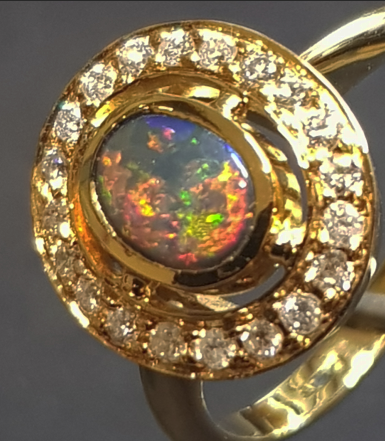Rethinking the Distinction Between Semi-Precious and Precious Stones: A Modern Perspective
- Samantha

- May 3, 2024
- 3 min read
Gemstones have captivated human fascination for millennia, adorning jewellery, crowns, and ceremonial objects. However, the traditional classification of gemstones into "precious" and "semi-precious" categories is a concept rooted in history rather than intrinsic value. The internet has many interpretations of the difference between precious and semi-precious stones and the language is still commonly used. I fundamentally disagree that this distinction remains relevant today. In this blog, we'll delve into the history of this distinction, explore why it's outdated, and why modern gemmologists often disregard it.
The Historical Context
The categorization of gemstones into precious and semi-precious dates back to ancient times. Historically, gemstones like diamonds, rubies, sapphires, and emeralds were considered precious due to their rarity, beauty, and hardness. Other gemstones like amethyst, topaz, and citrine were labelled semi-precious.
This distinction was largely arbitrary and often based on factors like availability and cultural preferences rather than objective value. For example, diamonds were considered precious due to their rarity, while topaz, though equally beautiful, was considered semi-precious because it was more abundant.
However even that historical summary is not a wholly accurate perspective of the past because for example pearls have held a special place in human history, often considered more precious than diamond by various cultures across different periods. In ancient Mesopotamia and Egypt (4000 BCE - 332 BCE) pearls were highly prized and considered symbols of wealth and luxury. They were often used as adornments for royalty and nobility. The Egyptian funerary portrait below shows the lady wearing pearls, the other image is a vintage jade pendant.
In traditional Chinese culture, jade has historically been regarded as more precious and spiritually significant than diamonds for a number of reasons. Today jade remains highly regarded among many Chinese people, especially those who appreciate traditional culture and values.
Challenging the Distinction
Changing Market Values: Over time, the market value of gemstones has shifted dramatically. While the traditional "big four" gemstones were once considered the epitome of preciousness, the rise of rare and exotic gemstones has challenged this notion. Stones like serendibite, alexandrite, tanzanite, and Paraiba tourmaline, which are far rarer than some traditional precious stones, now command higher prices in the market.
Subjectivity of Value: The concept of preciousness is inherently subjective. What one person considers precious might hold little value to another. Sentimental attachment can turn a seemingly ordinary stone into a priceless treasure. A family heirloom passed down through generations may have more sentimental value than a flawless diamond.
Quality is key: Not all emeralds are equal, a low quality emerald may be worth £20, a high quality Siberian amethyst may be so rare and fine that it is worth thousands of pounds. I know which one I would rather have and it is not the emerald. The distinction of semi-precious and precious has no logic in this context.
Modern Gemmology: Many modern gemmologists recognise the flaws in the traditional precious/semi-precious classification. They understand that a gem's value is determined by a combination of factors including rarity, beauty, durability, and cultural significance. They can take a broader view of value and focus on assessing all these qualities rather than adhering to outdated distinctions.
Limits Appreciation: The labels of precious and semi-precious can limit the appreciation of lesser-known gemstones and discourage exploration and innovation within the gemstone industry. Every year new and beautiful materials are discovered for us to use in jewellery and for spiritual purposes. Recent discoveries have included Taaffeite, Grandidierite and Jeremejevite. We should value them in a much broader context.
Conclusion
The distinction between precious and semi-precious gemstones is a relic of the past and very unhelpful. Modern gemmology recognises that a gem's value is multifaceted, taking into account factors beyond rarity and hardness. It's time to move away from outdated classifications and embrace the diversity and beauty of all gemstones.
As consumers, appreciating the unique qualities of each gemstone and recognising their individual value can enrich our experiences with these precious treasures. Let's celebrate the richness of the gemstone world without being constrained by arbitrary classifications of the past.









